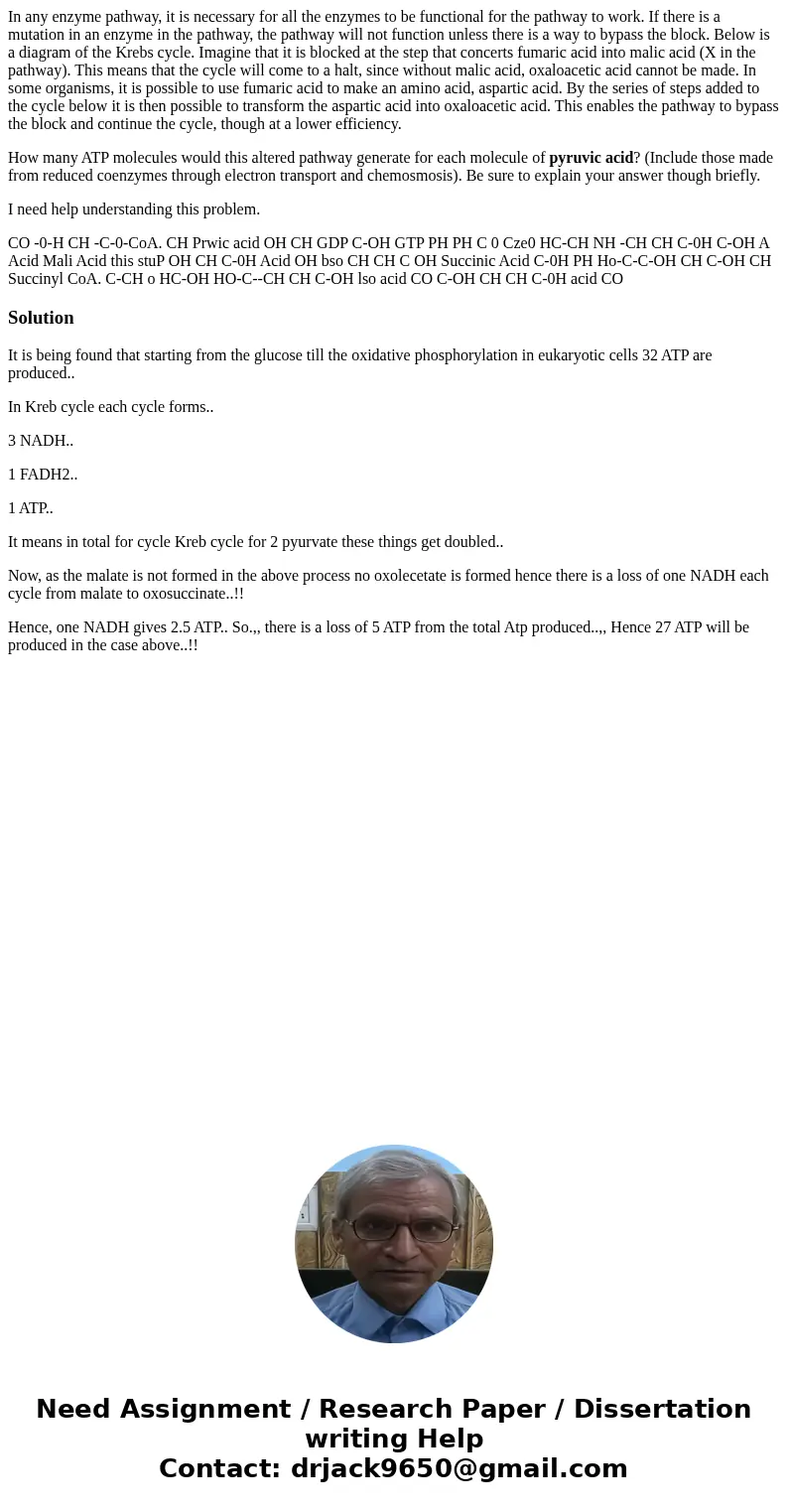In any enzyme pathway it is necessary for all the enzymes to
In any enzyme pathway, it is necessary for all the enzymes to be functional for the pathway to work. If there is a mutation in an enzyme in the pathway, the pathway will not function unless there is a way to bypass the block. Below is a diagram of the Krebs cycle. Imagine that it is blocked at the step that concerts fumaric acid into malic acid (X in the pathway). This means that the cycle will come to a halt, since without malic acid, oxaloacetic acid cannot be made. In some organisms, it is possible to use fumaric acid to make an amino acid, aspartic acid. By the series of steps added to the cycle below it is then possible to transform the aspartic acid into oxaloacetic acid. This enables the pathway to bypass the block and continue the cycle, though at a lower efficiency.
How many ATP molecules would this altered pathway generate for each molecule of pyruvic acid? (Include those made from reduced coenzymes through electron transport and chemosmosis). Be sure to explain your answer though briefly.
I need help understanding this problem.
CO -0-H CH -C-0-CoA. CH Prwic acid OH CH GDP C-OH GTP PH PH C 0 Cze0 HC-CH NH -CH CH C-0H C-OH A Acid Mali Acid this stuP OH CH C-0H Acid OH bso CH CH C OH Succinic Acid C-0H PH Ho-C-C-OH CH C-OH CH Succinyl CoA. C-CH o HC-OH HO-C--CH CH C-OH lso acid CO C-OH CH CH C-0H acid COSolution
It is being found that starting from the glucose till the oxidative phosphorylation in eukaryotic cells 32 ATP are produced..
In Kreb cycle each cycle forms..
3 NADH..
1 FADH2..
1 ATP..
It means in total for cycle Kreb cycle for 2 pyurvate these things get doubled..
Now, as the malate is not formed in the above process no oxolecetate is formed hence there is a loss of one NADH each cycle from malate to oxosuccinate..!!
Hence, one NADH gives 2.5 ATP.. So.,, there is a loss of 5 ATP from the total Atp produced..,, Hence 27 ATP will be produced in the case above..!!

 Homework Sourse
Homework Sourse